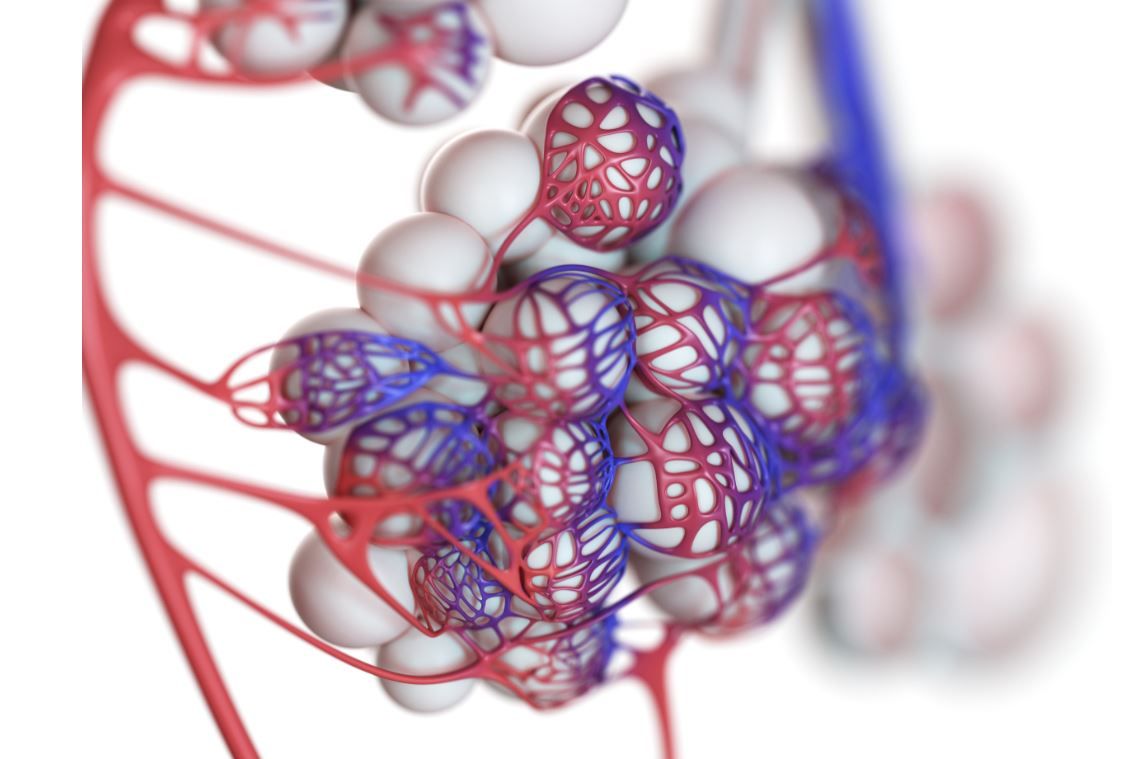- Clinical Technology
- Adult Immunization
- Hepatology
- Pediatric Immunization
- Screening
- Psychiatry
- Allergy
- Women's Health
- Cardiology
- Pediatrics
- Dermatology
- Endocrinology
- Pain Management
- Gastroenterology
- Infectious Disease
- Obesity Medicine
- Rheumatology
- Nephrology
- Neurology
- Pulmonology
COPD: CT Biomarkers Outperform Traditional Predictors of Disease Exacerbations
Prediction of COPD exacerbations was significantly better with a CT biomarker-based model than either exacerbation history or BODE index.
©SciePro/Adobe Stock

In persons at high risk of exacerbations of chronic obstructive pulmonary disease (COPD), a set of novel quantitative computed tomography (CT) biomarkers proved more effective for predicting severe and consistent COPD exacerbations than either exacerbation history or the BODE index for COPD Survival, according to findings just published in The Lancet Digital Health.
According to study authors, led by Muhammad Chaudhary, Carver PhD Scholar at the Roy J Carver Department of Biomedical Engineering, University of Iowa, use of quantitative CT to assess a range of pulmonary abnormalities, including COPD, is becoming more common. The 2 biomarkers assessed in this study, CT-derived measures of airway wall thickness and parenchymal texture, already have utility in assessing local/regional textural abnormalities and lung function decline. However, their role as predictors of COPD exacerbations has been relatively unexplored.
“Treatment options for patients who exacerbate consistently or require admission to hospital are scarce and expensive,” wrote Chaudhary and colleagues. They cite research from 2010 that found the estimated cost of COPD in the US was $32 billion of which 70% reflected COPD-related hospital admissions, underscoring the need for risk assessment measures of greater precision and higher yield. The aim of their study, the investigators said, was to develop and validate quantitative CT-based models for predicting COPD exacerbations and to use these models to compare the performance of CT biomarkers with traditional tools for exacerbation prediction. They followed this with a validation study.
Predictive model. To develop predictive models the research team drew on longitudinal data from 2 large well characterized multicenter study cohorts. From the ongoing Subpopulations and Intermediate Outcome Measures in COPD Study (SPIROMICS), the team analyzed individuals aged 40 to 80 years from 4 strata: those who never smoked, those who smoked but had normal spirometry, those who smoked and had mild-moderate COPD, and those who smoked and had severe COPD.
They used 3-year follow-up data from SPIROMICS participants who had results from high resolution CT scans at total lung capacity to develop prediction models for severe exacerbations: age, sex, race, body mass index (BMI), forced expiratory volume in 1 second (FEV1), exacerbation history, smoking status, respiratory quality of life, and 2 CT-based measures of lung tissue: density gradient texture (CTDG) and airway structure (Pi10).
Validation cohort. For external validation of the predictive models, Chaudhary et al use a subset of participants from the Genetic Epidemiology of COPD (COPDGene) cohort. Discriminative performance of each model was assessed using the area under the receiver operating characteristic curve (AUC). AUC was also compared with predictors including exacerbation history and the BODE (BMI, airflow obstruction, dyspnea, and exercise capacity) index. Calibration plots and Brier scores were used to evaluate model calibration.
FINDINGS
The published study reports that the final SPIROMICS cohort with complete 3-year follow up data for analysis numbered 1956 with a mean age of 63.1 years and comprised of 52% men. According to the findings, history of at least 1 severe COPD exacerbation applied to 434 (22%) patients.
For the CT biomarker-based models (ie, those including values for Pi10 and CTDG texture), the AUC was 0.854 (95% CI 0.852–0.855) for at least one severe exacerbation within 3 years and 0.931 (0.930–0.933) for consistent exacerbations (≥1 acute episode in each of the 3 years). Brier scores were low for all models, according to the findnings.
When the investigators compared the predictive quality of the CT biomarkers vs exacerbation history and BODE index for ≥1 severe event during the 3-year follow up, AUCs were significantly higher with CT biomarkers (0.854, 0.852–0.855) than with exacerbation history (3% difference; CT biomarkers 0.854 vs exacerbation history 0.823; P<.001) and BODE index (4% difference; CT biomarkers 0.854 vs BODE index 0.812; P<.001). Similar differences were observed in the external COPDGene validation cohort.
"We analysed CT biomarkers of lung tissue texture and airway structure in comparison with well-known predictors, including exacerbation history and BODE index," investigators wrote. "We found Pi10 and CTDG texture were predictive of severe and consistent exacerbations." They added that the biomarkers could be integrated into clinical decision making for early identification of patients at risk of severe exacerbations.”
Reference: Chaudhary, Muhammad F A et al. Predicting severe chronic obstructive pulmonary disease exacerbations using quantitative CT: a retrospective model development and external validation study. Lancet Dig Health. 2023;5:e83-e92. doi: https://doi.org/10.1016/S2589-7500(22)00232-1
